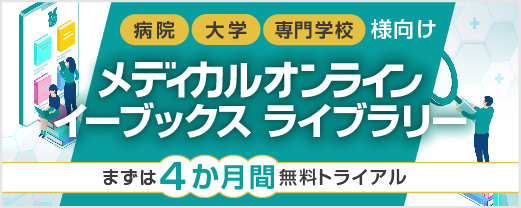アブストラクト
Japanese
| Title | 第5章 病態評価のための検査法 |
|---|---|
| Subtitle | ガイドライン解説 : 小児気管支喘息治療・管理ガイドライン2020 |
| Authors | 平井康太1)2), 望月博之1) |
| Authors (kana) | |
| Organization | 1)東海大学医学部総合診療学系小児科学, 2)東海大学医学部付属八王子病院小児科 |
| Journal | 日本小児アレルギー学会誌 |
| Volume | 35 |
| Number | 3 |
| Page | 256-261 |
| Year/Month | 2021 / |
| Article | 報告 |
| Publisher | 日本小児アレルギー学会 |
| Abstract | 抄録: 小児気管支喘息治療・管理ガイドライン(Japanese Pediatric Guideline for the Treatment and Management of Asthma: JPGL)2017に引き続き, 「病態評価のための検査法」として, 小児気管支喘息の診断と治療に必要な客観的な検査について説明している. 喘息の基本的な免疫異常であるTh2型反応の評価, すなわち, 血清総IgE値や末梢血好酸球数, アレルゲン特異的IgE抗体やプリックテストから, 喘息の診断や重症度の評価, 治療効果の判定に重要である呼吸機能検査[スパイロメトリー, 強制オシレーション法(forced oscillation technique: FOT), 気道過敏性検査を含む]や呼気NO測定について解説した. これらの検査の中で, スパイロメトリーが最も重要であるため, 原理から測定結果の解釈, 小児患者での実施上の留意点について解説を加えた. さらに, いくつかの新しい評価法についての解説も行っている. |
| Practice | 臨床医学:内科系 |
| Keywords | 気道過敏性試験, 呼気中一酸化窒素 (FeNO), 気道可逆性試験, スパイロメトリー, airway hyperresponsiveness testing, fractional exhaled nitric oxide (FeNO), reversibility testing, spirometry |
English
| Title | Commentary on Japanese Pediatric Guideline for the Treatment and Management of Asthma 2020 Chapter 5 Objective evaluation of asthma : lung function and biomarkers |
|---|---|
| Subtitle | |
| Authors | Kota Hirai1)2), Hiroyuki Mochizuki1) |
| Authors (kana) | |
| Organization | 1)Department of Pediatrics, Tokai University School of Medicine, 2)Department of Pediatrics, Tokai University Hachioji Hospital |
| Journal | The Japanese Journal of Pediatric Allergy and Clinical Immunology |
| Volume | 35 |
| Number | 3 |
| Page | 256-261 |
| Year/Month | 2021 / |
| Article | Report |
| Publisher | Japanese Society of Pediatric Allergy and Clinical Immunology |
| Abstract | Summary: Following the Japanese Pediatric Guideline for the Treatment and Management of Asthma: JPGL 2017, the objective tests required for the diagnosis and treatment of pediatric bronchial asthma are described. The evaluation of the Th2-type response, which is the basic immune abnormality in asthma, is discussed, including serum total IgE level, peripheral blood eosinophil count, allergen-specific IgE antibodies and skin prick test. Practically, evaluation of respiratory function [including spirometry, forced oscillation technique (FOT) and bronchial hyperresponsiveness test] and fractional exhaled nitric oxide (FeNO) measurement, which are important for diagnosis of asthma, evaluation of severity and therapeutic effect, are described in detail. Since spirometry is the most important test, the principle of measurement, the interpretation of results and the points to be noted in the pediatric patients are explained. Other new techniques for evaluation of airway condition and airway inflammation are also introduced. |
| Practice | Clinical internal medicine |
| Keywords | airway hyperresponsiveness testing, fractional exhaled nitric oxide (FeNO), reversibility testing, spirometry |
- 全文ダウンロード: 従量制、基本料金制の方共に770円(税込) です。
参考文献
- 1) 日本小児アレルギー学会作成, 足立雄一, 他監. 小児気管支喘息治療・管理ガイドライン2020. 協和企画, 2020.
- 2) 高瀬真人. 小児の肺機能検査のスタンダード 日本人小児スパイログラム基準値とカットオフ値. 日本小児呼吸器疾患学会誌 2010; 21: 17-22.
- 3) 手塚純一郎, 他. 小児呼吸機能検査ハンドブック 2020年改訂版. 東京: 協和企画, 2019.
- 4) Pellegrino R, et al. Interpretative strategies for lung function tests. Eur Respir J 2005; 26: 948-968.
- 5) Sharma S, et al. Clinical predictors and outcomes of consistent bronchodilator response in the childhood asthma management program. J Allergy Clin Immunol 2008; 122: 921-928.e4.
残りの23件を表示する
- 6) Szefler SJ, et al. Characterization of within-subject responses to fluticasone and montelukast in childhood asthma. J Allergy Clin Immunol 2005; 115: 233-242.
- 7) 日本呼吸器学会肺生理専門委員会. 臨床呼吸機能検査. 日本呼吸器学会 2016.
- 8) Hagiwara S, et al. Reference values for Japanese children's respiratory resistance using the LMS method. Allergol Int 2014; 63: 113-119.
- 9) 日本臨床衛生検査技師会. JAMT技術教本シリーズ呼吸機能検査技術教本. 東京: じほう, 2016.
- 10) 西間三馨. 運動誘発喘息の自転車エルゴメーターによる運動負荷量の検討. 日本小児科学会雑誌 1981; 85: 1030-1038.
- 11) 小児アレルギー研究会 EIA基準作成委員会. Exercise Induced Asthma(EIA)誘発に関わる運動の種類および量の検討(1)トレッドミルによる運動負荷について. アレルギー 1981; 30: 235-243.
- 12) Terada A, et al. Exhaled nitric oxide decreases during exercise-induced bronchoconstriction in children with asthma. Am J Respir Crit Care Med 2001; 164: 1879-1884.
- 13) American Thoracic Society; European Respiratory Society. ATS/ERS recommendations for standerided procedures for the online and offline measurement of exhaled lower respiratory nitric oxide and nasal nitric oxide, 2005. Am J Respir Crit Care Med 2005; 171: 912-930.
- 14) Dweik RA, et al. An official ATS clinical practice guideline: interpretation of exhaled nitric oxide levels (FENO) for clinical applications. Am J Respir Crit Care Med 2011; 184: 602-615.
- 15) Smith AD, et al. Diagnosing asthma: comparisons between exhaled nitric oxide measurements and conventional tests. Am J Respir Crit Care Med 2004; 169: 473-478.
- 16) Smith AD, et al. Exhaled nitric oxide: a predictor of steroid response. Am J Respir Crit Care Med 2005; 172: 453-459.
- 17) Knuffman JE, et al. Phenotypic predictors of long-term response to inhaled corticosteroid and leukotriene modifier therapies in pediatric asthma. J Allergy Clin Immunol 2009; 123: 411-416.
- 18) Yates DH, et al. Effect of a nitric oxide synthase inhibitor and a glucocorticosteroid on exhaled nitric oxide. Am J Respir Crit Care Med 1995; 152: 892-896.
- 19) 藤澤隆夫. コントロールレベルを知るためのバイオマーカー. 小児内科 2009; 41: 1430-1435.
- 20) Petsky HL, et al. Tailored interventions based on sputum eosinophils versus clinical symptoms for asthma in children and adults. Cochrane Database Syst Rev 2007; CD005603.
- 21) Tabata H, et al. A novel method for detecting airway narrowing using breath sound spectrum analysis in children. Respir Investig 2016; 54: 20-28.
- 22) Habukawa C, et al. Treatment evaluation using lung sound analysis in asthmatic children. Respirology 2017; 22: 1564-1569.
- 23) Shioya H, et al. Characteristics of breath sound in infants with risk factors for asthma development. Allergol Int 2019; 68: 90-95.
- 24) Kim CK, et al. Eosinophil-derived neurotoxin in childhood asthma: correlation with disease severity. J Asthma 2010; 47: 568-573.
- 25) Taniuchi S, et al. Serum eosinophil derived neurotoxin may reflect more strongly disease severity in childhood atopic dermatitis than eosinophil cationic protein. J Dermatol Sci 2001; 26: 79-82.
- 26) Corren J, et al. Lebrikizumab treatment in aults with asthma. N Engl J Med 2011; 365: 1088-1098.
- 27) McGeachie MJ, et al. Patterns of growth and decline in lung function in persistent child- hood asthma. N Engl Med 2016; 374: 1842-1852.
- 28) Bui DS, et al. Childhood predictors of lung function trajectories and future COPD risk: a prospective cohort study from the first to the sixth decade of life. Lancet Respir Med 2018; 6: 535-544.


